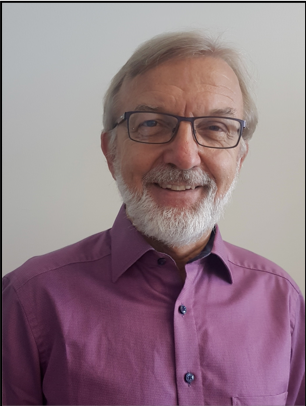Wavefront Attributes – A Tool for Processing, Imaging, and Model Building
OR
About the Course
SEG members, view the course for free!
2019 SEG Honorary Lecturer Europe. The kinematics of seismic events are a key quantity in processing, imaging, and model building of seismic data. By recording seismic events at different offsets and CMP positions, we are able to locally describe the wavefront of an event in the registration surface. The properties of the wavefront are linked to observed traveltimes of the seismic events. Various traveltime approximations exist, exploiting the full redundancy of the 5-D data space, i.e., time, offset and CMP-coordinates. These traveltime operators are controlled by attributes, which are related to first and second derivatives of the traveltime with respect to offset, and CMP coordinates. The attributes are usually determined in a data-driven process by fitting the operator to the data using an optimization technique maximizing a coherency measure like the semblance or stack power.
These attributes provide a framework for several processing applications in the data domain. For processing in the image domain, i.e., depth or time, the physical description of the attributes is essential. In the physical description, the attributes are related to the angle of emergence and the curvatures of two so-called eigenwaves, which provide a direct link to wave physics. For example, for diffractions, the curvatures of the eigenwaves coincide. This is not the case for reflections, which can be used to directly separate seismic diffractions of the wavefield in the data domain.
For the application to complex media, it is essential to obey the basic assumption of the traveltime approximations: the short spread assumption. Instead of using global approximations, describing a seismic event with a single operator, the multioperator approach is used. In this process, the seismic event is described locally, which implies the use of zero-offset and finite-offset variants of the traveltime approximations. Finite-offset attributes can be predicted from zero-offset/finite-offset data and refined by a local optimization process. This leads to a computationally efficient implementation of the multioperator approach for a successful time processing in complex media. Using the common reflection surface operator, we show that the above-described strategy allows to successfully retrieve wavefront attributes for the SEG salt model by comparing data-driven and model-driven wavefront attributes obtained by ray tracing. Field data examples complement the verification part.
Because the curvature radius of one of the above-mentioned eigenwaves shrinks to zero at zero time for a data consistent velocity model, this attribute provides a tomographic principle or a focusing criterion which is fundamental to wavefront tomography. This principle is not only applicable to reflections but also to diffractions. Regardless the complexity of the medium, diffractions provide a natural common depth point gather and contribute to velocity model building which is demonstrated by a field data example from the Mediterranean Sea. Other field data examples present results on the use of wavefront attributes in the data domain, among others, prestack data regularization and enhancement, time migration/demigration and diffraction separation.
Diffractions also represent the link to passive seismics because the moveout of a diffraction in a shot gather is identical to the moveout of a passive seismic event at the same location. The use of wavefront attributes therefore allows the processing of active and passive seismic data in a similar fashion. We present synthetic and field data examples for a simultaneous localization and velocity model building procedure for passive seismic events.
Your Instructor

Dirk Gajewski received a diploma in geophysics from Technical University of Clausthal, Germany (1981) and a Dr.rer.nat. from Technical University of Karlsruhe, Germany (1987). From 1987 to 1989, he worked as visiting scholar at the Geophysics Department, Stanford University and at the Center for Computational Seismology, Lawrence Berkeley Lab. In 1989, he returned to his alma mater in Clausthal as assistant professor before he was appointed to the associate professor position at the University of Hamburg in 1993. Since 2006, he holds the chair of Applied Seismics at the University of Hamburg. Since 1997, he is a member of the Wave Inversion Technology (WIT) consortium and became its director in 2007. Dirk served in various functions to the geophysics community, among others, as academic adviser to the Technical Program Committee of the EAGE (1995–2002), associate editor of Geophysical Prospecting (1997–2002), host and organizer of the 10th International Workshop on Seismic Anisotropy (2002), member of the steering committee of the Geophysical Instrumental Pool Potsdam (2002–2016), deputy director and board member of the Center for Earth Systems Research and Sustainability at the University of Hamburg (since 2009), member of the SEG council and member of the EAGE Research Committee. In 2009, he received the Best Poster Award of the Society of Exploration Geophysicists (SEG).
If there is a guiding theme in Dirk’s scientifc life, it is wavefronts and attributes. In the early years he used a model-driven approach in his work on ray tracing and ray amplitudes in 3D anisotropic media and the evaluation of migration weights from traveltimes. Later, he considered wavefronts in a data-driven way by determining wavefront attributes with multiparameter stacking operators and applying the attributes in processing, imaging, and model building. His current interest is on diffractions and passive seismic events which show specifc features in their wavefront attributes.
